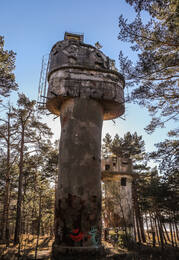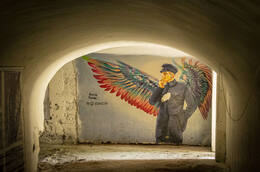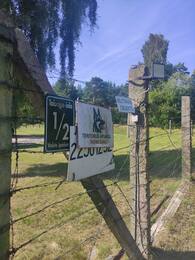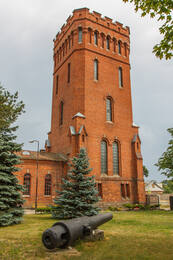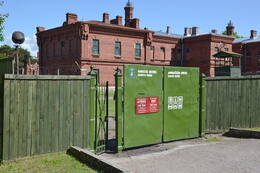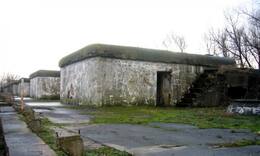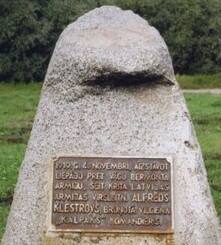World War I and the Wars of Independence in Southern Latvia
Day 1.
20 km
The day is spent in Liepāja
Practical info
- The itinerary is intended as a guide - how to optimally travel a region or country, or two countries, with the aim of getting to know their military heritage;
- The driver must plan for himself - how many of the recommended objects and places he can explore in one day;
- Before traveling, you should check the opening hours of sightseeing places (museums, collections, fortifications, etc.);
- For places where advance booking is required (local guides, private collections, etc.), a visit must be booked, specifying the date and time. If the trip is cancelled, the places booked must be informed;
- Accommodation must be booked in advance. Accommodation may be unavailable during the summer season, especially on the coast. Some catering establishments may not be open during the winter season;
- Choose not only summer for your trip, but also other seasons;
- The Latvian-Lithuanian-Estonian borders can be crossed by road freely without restrictions and at any time of the day. When entering from one country to another, you must have an ID card or passport with you;
- Visit tourist information centers where you can get additional information, brochures, and maps.
Sights
Karosta, the Military port of Liepāja (tour)
The Karosta is the largest historical military territory in the Baltics and occupies almost one third of the entire territory of Liepāja. The Karosta is a unique compound of military and fortification buildings on the shores of the Baltic Sea with a special meaning in the history and architecture of Latvia and the world. The Karosta features such military heritage sites as the North Pier and forts, the Redan, Karosta Prison, Karosta Water Tower, St. Nicholas Orthodox Maritime Cathedral, Oskars Kalpaks Bridge and others.
The Redan, Karosta
Redans, or Redana Fort, is located in Karosta, 14. novembra Street, about 1.5 km from the Northern Forts, in the nature reserve "Tosmare".
Historically, redans were elements of fortifications where longer sections of fortress walls were divided into shorter sections by building V-shaped positions facing the enemy, which allowed for better protection of the fortification wall. Karostas Redan is a late 19th century Liepaja Sea Fortress, projecting towards Lake Tosmare. As the fortress lost its fortress role, the fortifications and forts around it were partially blown up and rendered unusable. However, Redan remained almost intact.
In November 1919, after the failure at Riga, Pavel-Bermont Avalov's forces launched an intensive attack on Liepaja. The battle was also fought at Redan, where 80 soldiers of the Liepaja Military Port Commandant's Office under the command of Lieutenant Commander Radzins fought. In a swift attack on 14 November, the Bermontians managed to take Redan. This was followed by a counter-attack by Latvian troops and Redan was retaken.
In June, July and August, a knowledgeable guide will be waiting at Redan every day from 11.00-17.00, ready to tell you more about Liepāja Fortress and the historical events in the Karosta.
Liepāja Coastal Artillery Battery No. 2
Among the many objects of the Liepāja Naval Museum, the Liepāja Coastal Artillery Battery No. 2 is still the most mysterious place in Liepāja. Battery No. 2 was invariably equipped with ammunition depots for the troops of various existing powers.
Liepāja Fortress Battery No. 2 was built further from the coastline and was protected by a high fortification wall. The battery was armed with 16 11-inch (280 mm) mortars of the 1877 model. After the fortress was dismantled, ammunition depots were set up here. Due to the explosive hazard, the territory was closed to the public for 130 years, a guarded area, but now an exhibition has been set up here about the activities of the 1st Courland Division Headquarters in 1919-1940, as well as photographic evidence of the 1st Liepāja Infantry Regiment, the 2nd Ventspils Infantry Regiment and the Courland Artillery Regiment.
Karosta Water Tower
The water tower is located in Liepaja, in the Karosta, at 29 General Baloža Street - where the street meets Lazaretes Street. The water tower was an important building in the Karosta, as it supplied almost the entire Karosta area with drinking water. The exact time of construction of the water tower is unknown, but it could have been between 1903 and 1905. The project was probably designed by the St Petersburg architect Stefan Galenzovsky.
The water tower was powered by a steam engine with two coal boilers, one of which was kept in reserve, so there is an equally tall chimney next to the tower. The transmission powered four pumps, two of which were kept in reserve. Four boreholes supplied water to the pumps, which pumped it to a reservoir on the fifth floor of the tower and from there to the officers' apartments and soldiers' barracks in the Karosta.
When the Latvian Army took over the management of the water tower, the Ministry of War also took over the management of the water tower. After the Second World War, the Soviet Army took over the management. The water tower has been closed since 1989.
Although the tower was not a military building, in November 1919 the Latvian Army corrected the artillery fire of the British warships in the fight against the attack of the Bermont troops.
https://industrialheritage.travel/lv/objects/karostas-udenstornis/51
Liepaja Fortress Battery No 6
The 6th Battery, which is the best preserved fortification structure today, was planned to protect the coast of Liepaja Fortress south of the Trade Canal. The battery was to house four 6-inch (152 mm) guns of the 1892 model of the Canet system, eight 11-inch (280 mm) guns of the 1887 model, nine mortars of various calibres and two 57 mm Nordenfeld anti-tank guns. At the beginning of the First World War, after the fortress had already been dismantled, Battery 6 still contained the armament used in April 1915, when the German Navy attempted to land a landing at the South Pier.
In the early 1920s, the construction of the Olympia Stadium, which can still be seen today, began on the battery site. The fortification ditch dug at the southern end of the battery is today included in the Liepāja Seafront Park.
Monument to Latvian Army Lieutenant Alfreds Klestrovs, battle site of the armoured train "Kalpaks"
Lieutenant Commander of the Armoured Train Lieutenant Alfred Klestrov , born 8 March 1897 in Liepaja. Graduated from Liepāja City School, then from the surveyors' school in Riga.
Conscripted into the Russian Army during World War I, graduated from the Battalion School in Moscow. Served on the Romanian front, fought in Ukraine. When Ukraine was occupied by German troops, he returned to Riga.
The Order was awarded in 1922
Conscripted into the Latvian Army in the spring of 1919, served in the additional battalion of the 3rd Latgale Division. In October 1919 he was assigned to the armoured train "Kalpaks" as a commander.
On 4 November 1919, when the Germans attacked Liepāja, the commander of the armoured train "Kalpaks", Lieutenant Alfred Klyestrov, under heavy artillery and machine-gun fire, counter-attacked and got behind enemy lines with the armoured train. Unable to open cannon fire, he led his team in a bayonet fight and dispersed the enemy, thus contributing to the withdrawal of the Bermontese attack, but he himself fell in this battle to a bullet from German soldiers who had entrenched themselves at home and remained behind the Latvian army soldiers.
In 1935, a memorial plaque was erected at the place of death of Lieutenant Alfred Klestrovs, commander of the armoured train "Kalpaks", at the junction of the Liepāja railway and Liepāja-Grobiņa highway.




